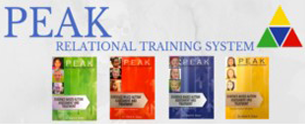What is ABA Therapy?
Applied Behavior Analysis (ABA) is a systematic process based on principles of learning theory and is used to make meaningful changes to behavior. ABA therapy is considered best practice for the treatment of autism and serves as a foundation for all the services provided by Ally Pediatric Therapy. Many facets of your child’s behavior can be improved, including but not limited to:
- Challenging Behaviors
- Language
- Speech
- Communication
- Play Skills
- Self-help Skills
- Feeding Skills
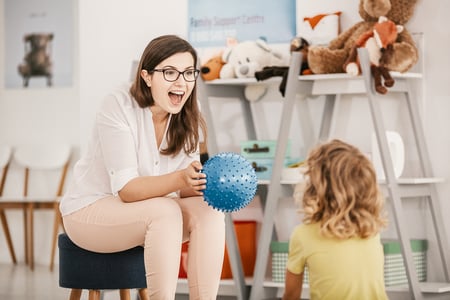
The goal of each ABA therapy session is to work towards mastery of each objective listed on your child's individualized treatment plan. ABA sessions can include a variety of teaching methodologies including, but not limited to,
- Pivotal Response Treatment (PRT)
- Discrete Trial Teaching (DTT)
- Natural Environment Teaching (NET)
- Behavior Management
- Crisis Intervention
These teaching methodologies allow information to be presented in a systematic manner, providing more opportunities for your child to learn skills.
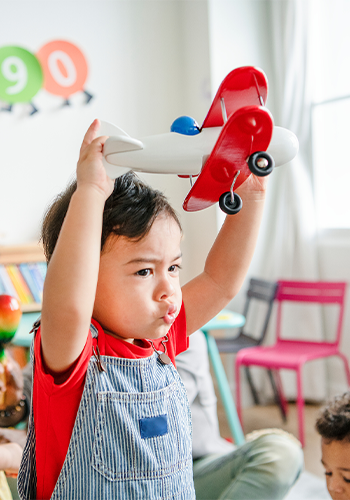
Our Approach to ABA Therapy
Every child is unique. Their treatment should be too. We believe in a blended approach of ABA methodologies, which allows us to utilize the most effective approach based on each child’s learning style and needs.
- Pivotal Response Treatment (PRT) is a comprehensive, evidence-based treatment approach that targets your child’s pivotal areas of development:
- Motivation
- Social initiations
- Self-management
- Responding to multiple language cues.
PRT relies heavily on the motivation of the child to guide the activities of the session and uses natural reinforcement. A well-run PRT session will make it appear like the child is playing.
- Discrete Trial Training (DTT) is a highly structured method of teaching that involves:
- Breaking down each skill into small, digestable steps
- Teaching each step in a systematic manner
- Arbitrary reinforcement that is awarded after correct responses
- Incorporating learned skills into natural environment for generalization
PRT and DTT are both beneficial teaching methodologies with useful applications. Every behavior technician at Ally Pediatric Therapy will achieve and maintain proficiency in both methodologies, allowing the technician to use the approach best suited to the skills being taught and the motivation of the child.
Social Skills Groups
We offer Social Skills Groups to improve your child’s social development. Each group will target an area of development pertaining to your child’s age, including:
- Conversation Skills
- Friendship Skills
- Verbal and Non-verbal Cues
- Social Media Manners & Safety
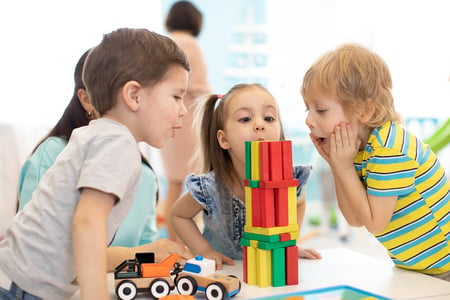
Groups will be led by a Behavior Technician and a Speech-Language Pathologist Assistant. Each participant will have 3-5 individual goals based on the results of the Social Skills Improvement System completed during the initial assessment. The facilitators will take data throughout the duration of each six-week session. At the end of the final session, a post-assessment will be completed and the goals and data are presented to demonstrate your child’s progress. The ratio of staff to participants for groups ranges from 2:10 to 2:12.
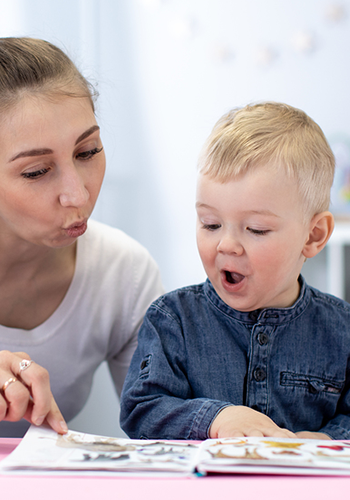
Benefits of a Center-Based ABA Therapy Model
When considering ABA therapy programs for your child, location and setting for therapy is key. At Ally Pediatric Therapy, we believe that center-based treatment offers clear and important advantages over in-home treatment for the children we support.
Research demonstrates that participants attending a center-based program significantly increase the number of skills and/or targets learned in each hour of treatment.
A center allows for:
- Greater environmental control
- Ability to learn more effectively
- Interaction with unfamiliar adults and peers
- Increased generalization of skills
- More frequent training and higher quality supervision of staff
An Illustrative Day in Our Center

Note: Each child is different and each day will look different depending on the individual needs of the child. This example is presented to illustrate what a day could look like.
- 8:00am: Johnny arrives for his first session and is greeted in the lobby by Sue, his first behavior technician. Johnny loves playing with trains so Sue takes Johnny to the train room to start the day. Johnny has difficultly sharing toys with his siblings, so Sue works on the goals that are written into Johnny’s Individualized Treatment Plan (ITP) to help reduce the challenging behaviors he demonstrates while sharing toys. At the end of their session, Sue walks Johnny to Zach, his occupational therapist (OT), and shares any pertinent information from the morning.
- 10:00am: Teaching Johnny to dress himself and better tolerate the feel of certain types of clothing was a main concern of his parents when beginning treatment. Zach works with Johnny on dressing goals that are written into his Occupational Therapy Plan of Care. Zach then walks him to the speech offices for his speech and feeding session with Melissa, his speech-language pathologist (SLP).
- 11:00am: Zach updates Melissa on Johnny’s progress from the morning. Johnny has difficulty with stuttering, so Melissa works on goals from Johnny’s Speech-Language Pathology and Feeding Therapy Plan of Care to help with his speech fluency. Melissa takes Johnny back over to the ABA/OT center for Social Skills Lunch Bunch.
- 12:00pm: During lunch, Johnny works on social skills with other similarly functioning children his age. This group is run by a behavior technician and a speech-language pathologist assistant.
- 12:30pm: Cindy meets Johnny in the lunch room to pick him up for his afternoon session. She takes him to the pretend play room and begins to target his pretend play goals outlined in his ITP. Cindy follows Johnny’s lead to see what he is interested in today and begins playing “car wash” with him. She sets up goals to increase his play skills with narrative through a script. Scripts are varied depending on what Johnny is interested in for the rest of the session.
- 2:30pm: Bob, another behavior technician, will step in for Cindy to increase generalization of the skills Johnny has targeted throughout his day. Johnny’s Mom told Sue this morning that he didn’t get much sleep last night, so Cindy lets Bob know that Johnny was more sluggish than normal towards the end of her session. Bob takes Johnny over to the patio to begin working on some of his daily living skills. They first work on hand washing and head outside. Bob has some activities set up to help Johnny learn how to follow a simple set of instructions to plant in the garden.
- 4:30pm: Utilizing the safety objective of safely crossing the parking lot written into the ITP, Bob will walk Johnny over to the speech offices for his PM care until his Mom arrives for pickup at 5:15pm.
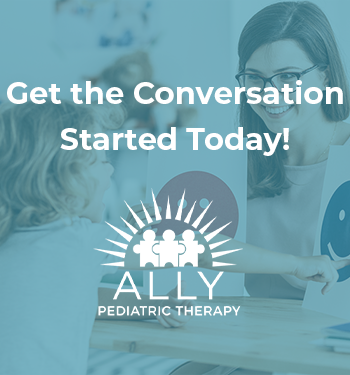
Ready To Get Started?
Fill out the information below and the location that would work best for you. One of our team members will contact you shortly to get the process started!


